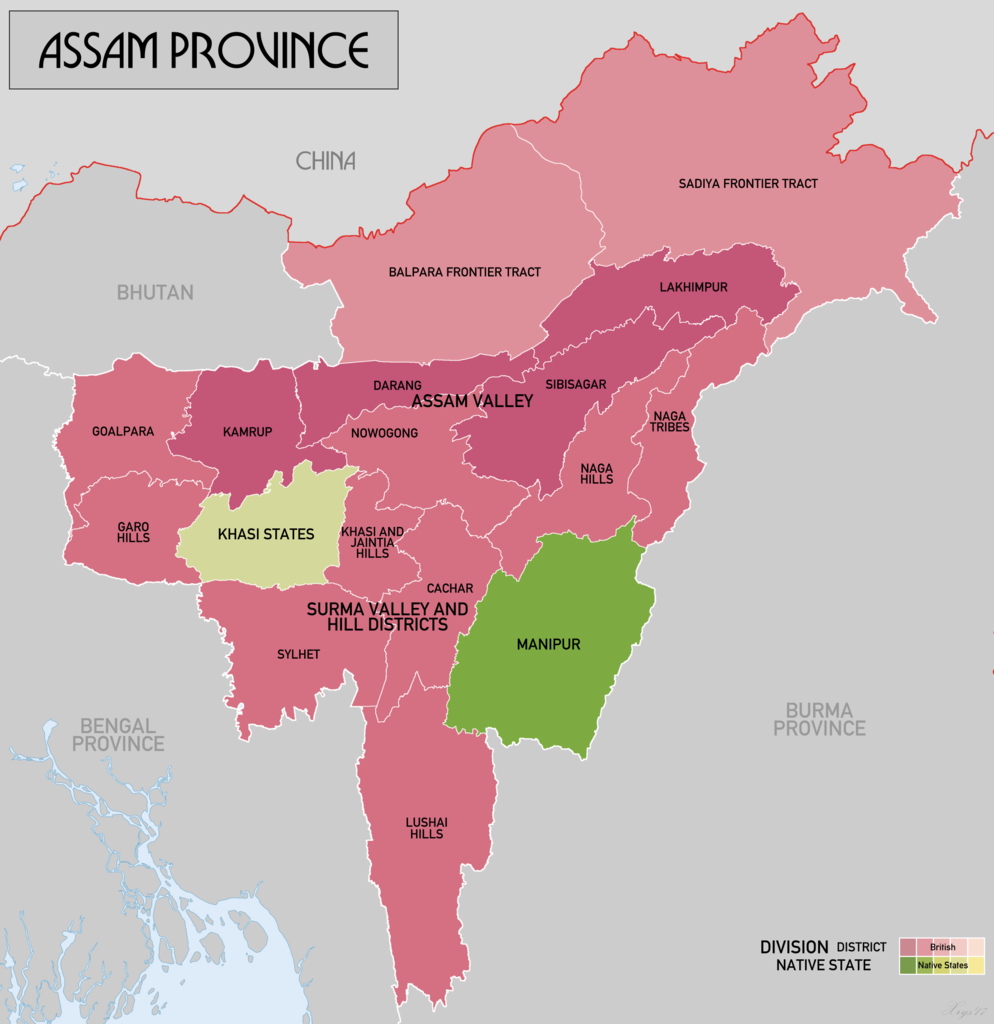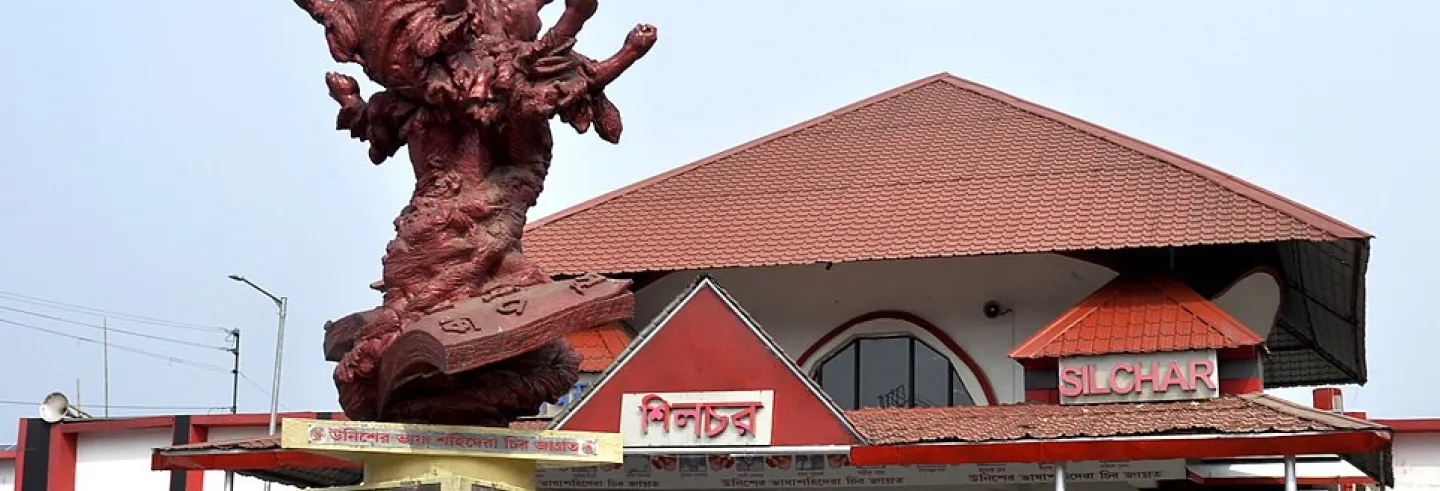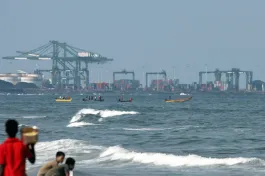At the time of the partition of India in 1947, emotions in Assam’s Brahmaputra Valley on the impending merger of Sylhet district with Pakistan were at odds with the dominant subcontinental political division of the time, which was the rift between the two faith communities. The Mountbatten Plan of 3 June 1947 prescribed that the fate of Sylhet, one of the province’s major districts, should be decided by a referendum, which was held a month later. To the surprise of many, the outcome — a majority vote favouring merger with Pakistan — was greeted with a sense of profound relief in large parts of Assam.
Since nation states are invested in national maps, "they prefer to cut the [last] century in half," writes historian David Ludden, "dividing epochs of empire and nation, stopping and restarting time at independence." But in order to understand why citizenship and immigration debates in Assam take a different tone than in other parts of India —as it happened with the Citizenship Amendment Act recently — one must splice "that long century back together."
The separation of Sylhet
Some of the architects of Partition — and those who agreed to it — talked of it as an attempt at avoiding a civil war. Drawing on an insight from contemporary political science, one could say that the Assamese reaction to Sylhet’s merger with Pakistan was a text-book case of a disjunction between local political configurations and the master cleavage of a barely averted civil war. Historian Amalendu Guha provides a clue to this disconnect. The Sylhet referendum, he wrote, was "virtually a vote on the twin issues of the reorganisation of India on a communal, and of the province of Assam on a linguistic basis."
When Assam was made a separate chief commissioner’s province in 1874, relatively densely populated Sylhet — culturally a part of Bengal — was included in the province. For the next seven decades the inclusion of Sylhet in Assam was often a contested issue and the possibility of its detachment from the province and its ‘reunion’ with Bengal was actively debated, causing significant political tensions.
The province of Assam was commonly divided into three ‘natural divisions’: the Assam valley, the Surma valley, and the Hills (see map). In terms of contemporary political geography, the Assam valley is now usually referred to as the Brahmaputra valley; the Surma valley is divided between the Sylhet division of Bangladesh, the three Barak valley districts of southern Assam (Cachar, Hailakandi, and Karimganj), and the Dima Hasao district of central Assam; and the Hills now form three of Assam’s neighbouring hill states and the hill districts of contemporary Assam. 'Assam valley' is still in use as the name for the tea growing region. The names Assam Valley School and Assam Valley Literary Award — both initiatives of the Williamson Magor Group, a tea corporation — reflect the continued resonance of this toponym in tea circles.
By the time Sylhet was merged with Assam in 1874 to form part of a single province, the district had been under British colonial rule for more than a century. A much larger number of residents of Sylhet — the new province’s most populous district — had received some form of western education, more than the inhabitants of the Assam valley and the Hills. It put Sylhetis in a significantly advantageous position when it came to jobs and career opportunities in the newly created province.
[T]he inclusion of Sylhet in Assam was often a contested issue and the possibility of its detachment from the province and its ‘reunion’ with Bengal was actively debated, causing significant political tensions.
Sylhet’s "separation from Bengal in 1874," writes historian Ashfaque Hossain, "gave its Hindu — and later Muslim — elites a dominant position in Assam in the spheres of politics, administration, and education within the colonial polity." Little wonder that "the line of division in Assam politics," as Sarveswar Barua put it in a speech at the Assam legislative council in 1936, "is primarily not between Hindu and Muhameddan or on caste lines, but between the inhabitants of the Assam Valley and those of the Surma valley."

The Surma valley-Assam valley cleavage coincided with the political divide between Assamese and Bengali speakers. Almost the entire indigenous population of Sylhet, said the Sylheti Congress leader Brojendra Narayan Chaudhury at a legislative council meeting in 1924, "speaks Bengali, belong ethnologically to the Bengali race, have the same manners, customs and traditions and thoughts as their brethren in Bengal and are indissolubly bound up with them by ties of blood and social relationship." Choudhury, then a leading figure of the Sylhet Reunion League, declared that "the transfer of Sylhet from this Administration to Bengal is the chief concern of the representatives of Sylhet. Indeed, this is our only politics."
The position of Sylhet’s Hindu elite, however, began to shift in subsequent years. In Ashfaque Hossain’s words, "in the 1920s and 1930s they insistently supported a 'Back to Bengal' movement, but later the same leaders reversed their position and mobilised political forces against Sylhet’s reunion with Bengal."
The Assam’s Provincial Congress Committee was founded in 1921 after the decisive vernacular turn in the politics of the Indian National Congress. Only the Assamese-speaking Assam valley districts were made part of the Provincial Congress at its founding. The Bengali-speaking Surma valley districts of Sylhet and Cachar — the Barak Valley districts of present-day Assam — remained with the Bengal Provincial Congress Committee. The Congress movement at that point had not branched out to the Hills.
‘Populating’ the Assam valley
Like many other frontier regions of Asia, the Assam valley and the Hills were sparsely populated; the Hills significantly more so. ‘Populating’ the Assam valley was official colonial policy. Vast tracts of land were given away to European tea planters in the second half of the 19th century using the legal fiction of ‘wastelands’ as subterfuge. The ‘wasteland’ fiction was extended in the early 20th century to the low-lying areas of the floodplains of the Brahmaputra river — lands that under pre-colonial political regimes were used only for seasonal cultivation and not for year-round cultivation and settlement. Muslim Bengali peasants from the densely populated deltaic eastern Bengal were encouraged to settle those lands. This policy got its initial boost during the years after Bengal's partition when for six years between 1905 and 1911 Eastern Bengal and Assam was a single province. In subsequent years, the flow of immigrants increased significantly, and by the 1930s immigration and settlement of the Assam valley emerged as intensely contentious and divisive issues.
Decolonization with Partition was clearly construed very differently in Assam than in the Indian heartland.
Given the intensity and scale of this immigration, Assam quickly became a part of the territorial imaginary of a future homeland for the Muslims of the subcontinent. The All-India Muslim League emerged as a significant political force in both valleys of Assam. The policy of settling ‘wastelands’ by east Bengali peasants got an added boost during the times when the Muslim League formed part of the provincial government. On the question of restricting settlement areas, though, the League was split along the lines of the divide between the two valleys. The Assam Provincial Congress — with its political base exclusively in the Assam Valley — and new protest groups such as the Asom Sangrakshini Sabha (Assam Preservation Association) opposed unrestricted immigration both ideologically and politically.
Acculturation by immigrants
As immigration and settlement became politically controversial, the acculturation of immigrants into the Assamese way of life became an object of policy intervention. This issue was actively considered by the Line System Committee, which the Assam legislative council created in 1937 to assess the continued utility and efficacy of the Line System that restricted immigrant settlement areas. The majority considered it "eminently desirable that the immigrants should be assimilated into the country of its adoption" and that "Assamese should be learned by them and taught in their schools." Assamese schools began to be established in those areas as early as the 1930s. Today, the descendants of east Bengali immigrants settled in the Brahmaputra Valley are almost all native Assamese speakers.
In the years leading up to Partition, concerns about language, cultural preservation, immigration, and settlement drove political debates in Assam as much as the Hindu-Muslim question. For example, the Congress party’s election manifesto for the provincial elections in January 1946 promised Sylhet’s separation from Assam. Gopinath Bordoloi—then the prime minister of Assam—was among the political leaders that Viceroy Archibald Wavell met during the Cabinet Mission’s visit to India in 1946. Wavell wrote in his journal entry for that day that Bordoloi conveyed to him that "Assam would be quite prepared to hand over Sylhet to Eastern Bengal."
Amalendu Guha speculated that to Assamese political leaders at the helm of the provincial administration, the Sylhet referendum seemed the opportunity of a lifetime to detach Sylhet from Assam. Decolonization with Partition was clearly construed very differently in Assam than in the Indian heartland.
But the sense of satisfaction felt in the Brahmaputra valley at the outcome of the referendum was short-lived. The Boundary Commission headed by Cyril Radcliffe carried out the will of the majority and allotted Sylhet to Pakistan. But in order not to disrupt vital communication links within Assam, the territories of four thanas: Patharkandi, Ratabari, Badarpur, and Karimganj (only a part of it) were given to India. Those areas were merged with Cachar, which is now divided into four districts. Once Partition became a reality, "large numbers of Sylheti Hindus from the ceded parts of Sylhet district," as historian Anindita Dasgupta puts it, moved to (undivided) Cachar and other parts of Assam "where they had established considerable economic and social networks in the period 1874-1947."
In the years leading up to Partition, concerns about language, cultural preservation, immigration and settlement drove political debates in Assam as much as the Hindu-Muslim question.
After Sylhet’s merger with Pakistan the first order of business vis-à-vis Cachar, from the perspective of Assam’s political leadership, was to bring its district Congress organization into the fold of the Assam Provincial Congress. In August 1948 the Assam Congress leader M. Tayyebullah wrote to the Congress' president Rajendra Prasad regarding the "affiliation of the Cachar district in Assam as reconstituted after the Sylhet Referendum." Since Cachar "is cut off from West Bengal, being intercepted by Eastern Pakistan," wrote Tayyebullah, "any idea of keeping Cachar under the Bengal Provincial Congress Committee cannot arise." The Congress organisation in Cachar, he urged "must naturally be affiliated" with the Assam Provincial Congress. The question of language, he added, "should not cloud the issue."
Even after Sylhet became a part of Pakistan, the divide between the two valleys in Assam did not quite recede into the past. It acquired a new incarnation: the Brahmaputra valley-Barak valley divide. The Barak and the Surma are the same river. The Barak branches into two, one of which is called the Surma, which flows mostly through territories that are in present-day Bangladesh. In recent years, anyone interested in Assam politics — whether politicians or reporters — has had to learn the nuances of this inter-valley friction. National politicians, when they speak in the other valley, not only switch languages — at least the few words of Assamese or Bengali they can manage — but on sensitive subjects such as the Citizenship Amendment Act, they alter the texts of their speeches to suit local sensibilities.
The politics of language choice in Assam, however, took an unexpected turn during the Partition years that needs to be emphasized. Between the censuses of 1931 and 1951 the percentage of Assamese speakers in the state’s population rose by a whopping 26 percentage points: to 56.7% from 31.4%. This happened almost entirely because of the emergence of a new community of native Assamese speakers.
I had earlier alluded to the process of ethnic and cultural change among descendants of Muslim east Bengali immigrants in the Brahmaputra Valley. They describe themselves as Bengal-origin Assamese Muslims. They are native Assamese speakers (unlike the descendants of Muslim east Bengali immigrants in the Barak Valley). The community has a significant presence in Assamese literary and cultural life; quite a few of them are Assamese language teachers in schools and colleges, and Assamese language journalists. This has led influential public intellectuals such as Homen Borgohain and Parag Kumar Das to propose the term Na-Axomiya or neo-Assamese to describe this community. Since the Miya poetry movement came into national prominence it has become common to describe them as Miya Muslims. ('Miya', traditionally, was a pejorative Assamese word for immigrant Muslims. The Miya poets have reclaimed the word, not unlike the use of the word “nigger” — an entrenched slur word — in African American youth cultures.) This remarkable example of culture change reinforces the argument made by Benedict Anderson in his classic book Imagined Communities: that language is "fundamentally inclusive" and is not "an instrument of exclusion."
The significance of the change of native language by this numerically large community can hardly be exaggerated. Had they not switched to Assamese — and identified themselves as Assamese speakers in the 1951 census — the claim of the Assamese language to being the state’s official language would have been significantly weaker. The number of people speaking Assamese as compared with speakers of other languages, notably Bengali, remains a politically sensitive issue in Assam and it has implications for Assam’s future political stability.
Official language status
Contrary to the expectations of Assamese leaders who oversaw the transition to Independence, Sylhet’s merger with Pakistan, it could be said, did not quite settle Assam’s Sylhet question. The long history of political friction between the two valleys created a problematic legacy. With Assamese being pitted against Bengali for the first part of the 20th century, for key segments of Assamese civil society, official language status for Assamese became an object of desire in the latter half of the century. This particular aspect of language politics followed the logic of path-dependency. The campaign seeking official language status for Assamese gained momentum in the immediate post-Independence years; vernacularising came to be seen as a necessary part of decolonization. But while the desire for dignity, freedom and empowerment may have animated the vernacularisation campaign, it proved to be a double-edged sword.
[T]he key phrase ‘Assamese people’ has so far eluded a definition that the current political dispensation finds acceptable.
In 1960 at the height of the official language movement in the Brahmaputra Valley, and an equally vehement oppositional mobilization in the Barak Valley, Assam's chief minister Bimala Prasad Chaliha made what seemed an astonishing statement to many. Chaliha said that while there were practical reasons to establish an official language the state government would like to "wait until they get the same demand from the non-Assamese speaking population for declaring Assamese as the state language."
Assam in 1960 included not only present-day Assam but also what are now the states of Meghalaya, Mizoram and Nagaland. The ‘non-Assamese speaking population’ of this large territory included native speakers of a variety of languages. Leaving aside Meghalaya, Mizoram, and Nagaland, even in the territory that currently constitutes Assam, there are native speakers of a number of languages other than Assamese or Bengali. Consider just a few indigenous languages: Bodo, Dimasa, Karbi, and Mising. In recent years significant resources — in time, money and intellectual energy — have had to be spent in an effort to come up with an official definition of the phrase ‘Assamese people'. This has become necessary because clause 6 of the Assam Accord of 1985 promised "constitutional, legislative and administrative safeguards to protect, preserve and promote the cultural, social, linguistic identity and heritage of the Assamese people." But the key phrase ‘Assamese people’ has so far eluded a definition that the current political dispensation finds acceptable.
Viewed from this perspective Chaliha’s words seem remarkably far-sighted and wise. They are reminiscent of the talk of patience in deliberative democratic theory. Considering the public emotions of the time it is unlikely that the politically astute Chaliha was expecting to persuade his detractors. But had his counsel on democratic patience prevailed, Assam and North East India might be on a very different path today.
(Sanjib Baruah's 2020 book on the North East was the subject of this review in The India Forum in August 2020.)










